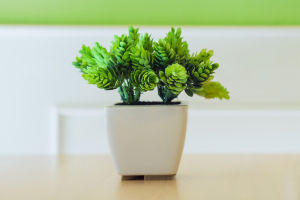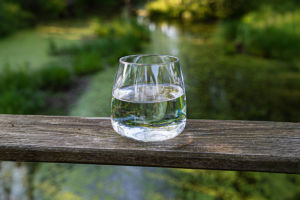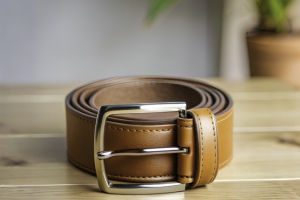
Laundry Germ-Free

Lykkers, have you ever wondered if your clothes are truly clean after a wash? We might assume that laundry detergent does the job, but in reality, it only removes dirt and stains—not bacteria!
That means germs can survive even after a full wash cycle. According to experts, the best way to remove bacteria in laundry is to use hot water and bleach. But don't worry—we're breaking down all the best ways to keep your clothes fresh and germ-free. Let's get started!

Step 1: Sort Clothes by Material and Color
Before we throw everything into the washing machine, we need to separate our clothes properly. Different fabrics, like cotton and linen, require different care. Plus, darker colors—such as deep reds, blues, and purples—can bleed onto lighter clothes like pastels or whites. If our clothes have multiple colors, we can categorize them based on the dominant shade.
Related
 10 Easy DIY Wind Chimes That Will Transform Your Home Into a Dreamy Haven!
10 Easy DIY Wind Chimes That Will Transform Your Home Into a Dreamy Haven!
 Unveil the surprising science and symbolism behind Lucky Bamboo and its potential to enhance your life!
Unveil the surprising science and symbolism behind Lucky Bamboo and its potential to enhance your life!
 Transform Your Home into a Green Oasis: 5 Easy Ways to Use Plants as Stunning Decor!
Transform Your Home into a Green Oasis: 5 Easy Ways to Use Plants as Stunning Decor!
 Discover the Magic of Modern Minimalist Bathrooms—A Blend of Elegance and Functionality You’ll Love!
Discover the Magic of Modern Minimalist Bathrooms—A Blend of Elegance and Functionality You’ll Love!
 Doctors shocked: The common household item slowly destroying your health every day!
Doctors shocked: The common household item slowly destroying your health every day!
 Belts Are the Ultimate Fashion Weapon— But Are You Using Them Right?
Belts Are the Ultimate Fashion Weapon— But Are You Using Them Right?
Checking clothing labels is also important. They tell us whether a fabric can handle bleach, which type of detergent to use, and the safest washing temperature. Following these guidelines helps us keep our clothes in good shape while ensuring a deep clean.
Step 2: Use the Right Amount of Detergent
To effectively clean our clothes, we should add about a quarter cup of laundry detergent. If we see visible stains, using half a cup will provide extra cleaning power. Some people also mix in half a cup of borax, which helps boost the detergent's performance and reduces odors.
Step 3: Use Bleach Correctly
Not all clothes can handle bleach, so we need to check labels first. If our fabric allows it, adding about three-fourths of a cup of bleach can effectively remove bacteria. The key ingredient in common bleach is sodium hypochlorite, which works fast—it can deactivate dangerous bacteria like E-coli in just milliseconds. A concentration of 2.6 ppm (parts per million) can stop bacterial growth in five minutes!
If our washing machine doesn't have a bleach dispenser, we can dilute the bleach with water for five minutes before adding it to the wash cycle. This helps prevent fabric damage while still ensuring proper disinfection.
Step 4: Choose the Right Water Temperature
A 2020 study from the Journal of Small Animal Practice found that washing clothes at 30°C removes stains but doesn't completely remove bacteria. That means if we really want to sanitize our laundry, we need to use the right water temperature.
For cotton fabrics, we should wash them at a minimum of 40°C, along with bleach or other disinfectants, to eliminate bacteria. Linen and other delicate materials can be washed at slightly lower temperatures (but not exceeding 60°C) to prevent damage. No matter the fabric type, the wash cycle should last at least 60 minutes for the best results.
And no, we don't need to boil our clothes at 100°C—unless we want to go shopping for new ones every week!
Step 5: Add Vinegar for Extra Cleaning Power
During the final rinse cycle, adding half a cup of 5% white vinegar can help remove lingering odors and act as a natural disinfectant for non-cotton fabrics. This trick is especially useful when we're dealing with sweaty gym clothes or musty-smelling laundry.

Step 6: Dry Clothes Immediately
Did you know that high temperatures can destroy viruses? Research shows that certain germs, including some viruses, die after 30 minutes at 56°C. This means that drying our clothes properly is just as important as washing them.
Using a dryer set to 70°C for 30 minutes should be enough to remove most bacteria. Cotton clothes can tolerate higher heat, while delicate fabrics should be dried at lower temperatures to avoid damage.
No Dryer? The Sun is Our Best Friend!
If we don't have a dryer, we can still naturally disinfect our clothes by hanging them in the sun. Scientists discovered the power of sunlight back in 1878—its ultraviolet (UV) rays have strong germ-killing effects.
UV light with wavelengths under 200 nm can break down oxygen molecules, producing ozone. Both UV rays and ozone can destroy bacteria and other microbes. So, letting our clothes dry under direct sunlight is an effective and cost-free way to keep them fresh and clean.

Let's Keep Our Clothes Germ-Free!
With so much advanced laundry technology today, it's easy to assume that our washing machines do all the work for us. But during times of increased health concerns, we should pay closer attention to how we clean our clothes. By using the right temperature, disinfectants, and drying methods, we can make sure that our laundry is truly fresh and germ-free.
Lykkers, how do you usually wash your clothes? Do you have any extra tips for keeping laundry clean and bacteria-free? Let's share and learn from each other!